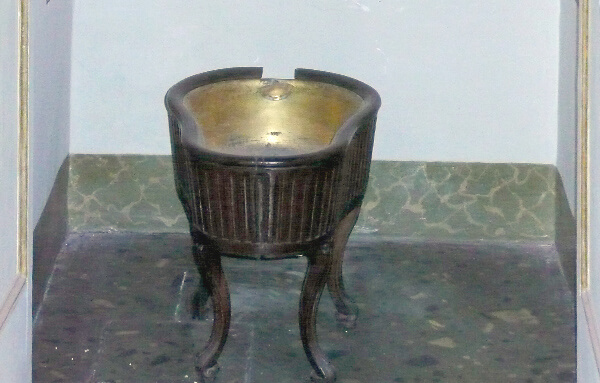Curiosity about Bidet
The bidet begans appearing in French furniture from the late seventeenth and the early eighteenth century, but we know neither the exact date nor the name of its inventor. The earliest evidence dates back to 1710, the year when the probable inventor, Christophe Des Rosiers, installed it at the home of the French royal family. Those were the days of Louis XIV, the "Sun King". The Marquis Jean-Baptiste in 1731 dedicated a chapter in Thérèse philosophe, "Utilité des bidets." Indeed, the bidet was not used in France; at Versailles there were 100 bathrooms but they were all abandoned in a decade.
Another document that attests to the appearance of the bidet in those years is linked to a story that has as its protagonists the Marquis d 'Argenson and Madame de Prie and dates back to 1726.
Initially it was a bowl with an ovoid shape arranged on a wooden support, with four feet, which maintained it to a suitable height for washing the private parts of the body. The cabinet of refined bill came out exclusively from the laboratories of the great cabinet makers. In the ledgers of the artisans of the first half of the eighteenth century was called the "chair of cleaning", but it seems that right from the beginning was imposed the term Bidet, with the meaning of "horse", because the word bidet is also the French name to indicate the pony. It comes from Celtic origin “bid” , that means small, and “bidein” that means little creature. The same name is due to the similarity of the position taken while using the bidet with that of the pony ride.
In fact, to use the bowl was necessary to set astride. Already during the sixteenth century in Italy a small horse of countryside was called bidetto.
The first prototypes with a porcelain basin (sometimes made of tin) and fine materials were commissioned from a special elite of the aristocracy, in fact the users of this glitz hygienic belonged to a small group of powerful and influential people, all connected to each other.
In the second half of the eighteenth century we can find evidence of the first bidet used outside France, but always in Europe and specifically in the Italian territory, which gave way to its diffusion first in the Kingdom of the Two Sicilies and, many years later, also in the rest of the peninsula. It was Queen of Naples Maria Carolina of Habsburg-Lorraine to be particularly innovative in wanting a bidet in her personal bathroom of the Royal Palace.

Since 1900, during the Victorian age, with the technological advancement of the hoses, the bidet, with the potty, becames a tool used in the bathroom and no longer in the bedroom.
In 1960,there was the market introduction of the electronic bidet, that is due to the union of the toilet with bidet, particularly useful in small areas where the two sanitaries would not find place.
As the unification of Italy occurred, the Savoy began an inventory of all the objects they found in the Bourbon palace, and finding themselves in front of this strange object unknown to most people, called it as "unknown object in the shape of guitar."
The bidet became soon popular as a tool like the potty and, due to technologic advances in hoses, it was no longer placed in the bedroom but in the bathroom.
The bidet conquered the bathrooms of the Italians but even today, apart in Spain, Portugal, the Latin countries and in Japan, in other countries it is a little or not at all widespread.
Today it is used by 97% of Italians, 47% of the French and Portuguese, by 13% of the British and Americans, and only by 6% of the Germans.
From the following list is easy to deduce the historical - geographical diffusion of this root
European languages:
BIDEUS (Latin)
BAITHEON (greek)
BE-THEEKN (Etruscan)
BE TWUUS (Saxon)
BEODEO (Cantabrian - sec. XIII)
Middle Eastern Languages
BH DH (Hebrew)
BIEHDUOK (Coptic)
BAEDDOUCH (Aramaic)
BAIDDOCH (Assyrian)
Asian Language:
BEODOAH (Tibetan)
BIN DEN (Chinese Manchu)
BAN DEAN (Nepalese)
BAIDEHT (Sanskrit)
And, with Hello bidet, the story continues and evolves ...

